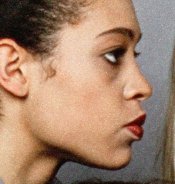Marco B
Subscriber
Hi all,
I today for the first time scant a Fuji color negative film (Reala 100). Now, besides the fact that this seems to be a pretty coarse grained film compared to some other 100 ISO color negative films like the new Ektar 100, I also noticed that the grain structure seemed to be different. I especially was intruiged by the apparant "pinkish" grains, see the scan below, that almost seem like light colored "holes" punched in the negative. I have not seen this type of grain structure before. Is the grain structure of Fuji color negative really that different from Kodak's? Or is this a sign of some kind of bad processing?
Please note that the scan is a 100% - "actual pixels" - crop of a huge 6300 pixels-per-inch scan.
Marco
I today for the first time scant a Fuji color negative film (Reala 100). Now, besides the fact that this seems to be a pretty coarse grained film compared to some other 100 ISO color negative films like the new Ektar 100, I also noticed that the grain structure seemed to be different. I especially was intruiged by the apparant "pinkish" grains, see the scan below, that almost seem like light colored "holes" punched in the negative. I have not seen this type of grain structure before. Is the grain structure of Fuji color negative really that different from Kodak's? Or is this a sign of some kind of bad processing?
Please note that the scan is a 100% - "actual pixels" - crop of a huge 6300 pixels-per-inch scan.
Marco










 . Thanks for the compliment by the way, I am glad that all the work that went into these things is appreciated.
. Thanks for the compliment by the way, I am glad that all the work that went into these things is appreciated.

